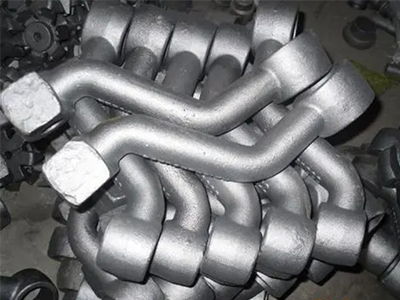- Introduction to the adjustment method of rotary kiln roller steel castings
- The characteristics of precision casting
- Steel castings foundry manufacturers introduce the properties of castings
- Learning About a Steel Casting Foundry Where Metals are Cast From
- What are the determination methods of stainless steel precision casting?
- Basic characteristics of Gray Iron Castings
- Selection of stainless steel precision casting cold iron materials
- Causes of insufficient precision specifications of precision castings
- The points for attention during the operation of precision casting
- Factors that cause precision casting size defects
- Call : +86 13390692151
- sale@kfqizhongji.com
-
Room 1, No. 21, Chaoying East Road, Zhoushi,
Kunshan City, Jiangsu Province, China
Factors that cause precision casting size defects
1. The influence of casting structure. The casting wall thickness, the shrinkage rate is large, the casting wall is thin, the shrinkage rate is small, the free shrinkage rate is large, the hindrance shrinkage rate is small. The introduction of precision casting manufacturers may be due to the influence of casting materials. The higher the carbon content in the material, the smaller the linear shrinkage, and the lower the carbon content, the greater the linear shrinkage; the casting shrinkage of common materials is K = (LM-LJ) / LJ × 100%. LM is the cavity size, LJ is the casting size, and K is affected by wax mold K1, casting structure K2, alloy type K3, pouring temperature K4.
2. The effect of molding on the linear shrinkage of castings. The influence of wax injection temperature, wax injection pressure and holding time on the mold size is obvious in wax injection temperature Z, followed by wax injection pressure. The pressure holding time has little effect on the final size of mold Z after mold forming; the linear shrinkage of wax is about 0.9-1.1%; when the mold is stored, the shrinkage value is about 10% of the total shrinkage, but when stored for 12 hours, the mold size is basically stable. The radial shrinkage of the wax mold is only 30-40% of the shrinkage in the length direction, and the effect of wax injection temperature on the free shrinkage is much greater than that on the hindered shrinkage.
3. The influence of shell materials, such as zircon sand, zircon powder, Shangdian sand and Shangdian powder, is negligible because of its small expansion coefficient, which is only 4.6 × 10-6 / ℃. The influence of shell roasting is small, when the shell temperature is 1150 ℃, it is only 0.053%, so it can be ignored. Under the influence of casting temperature, the higher the pouring temperature is, the higher the shrinkage is, and the lower the pouring temperature is, the smaller the shrinkage is, so the pouring temperature should be appropriate.





